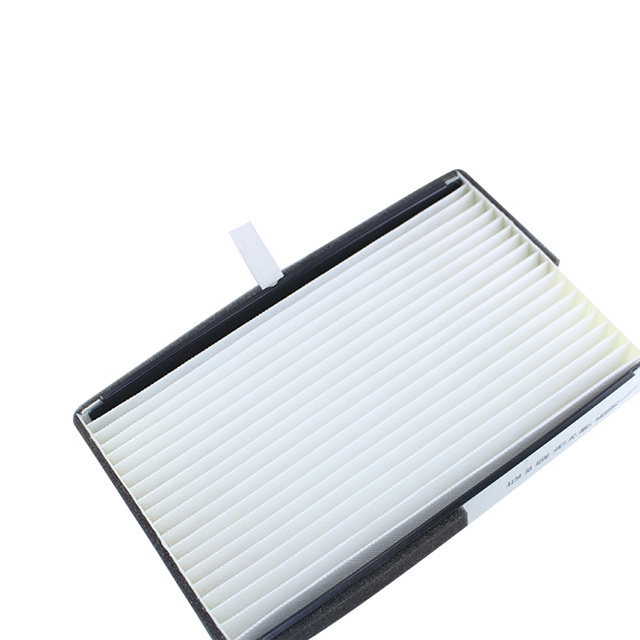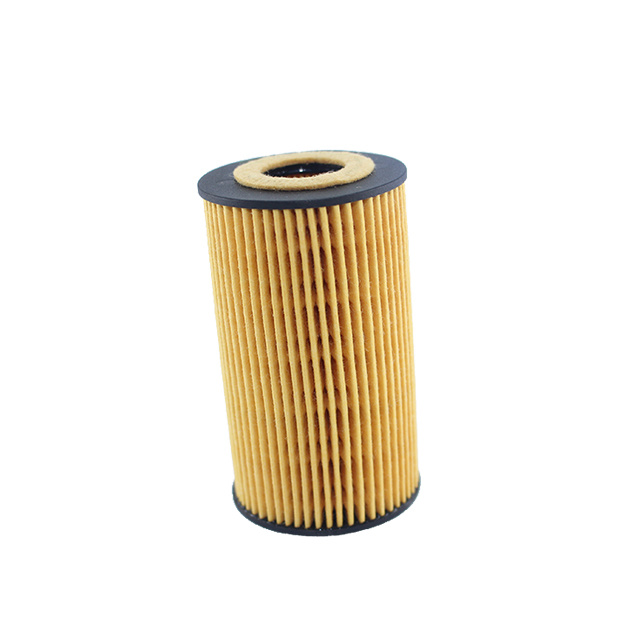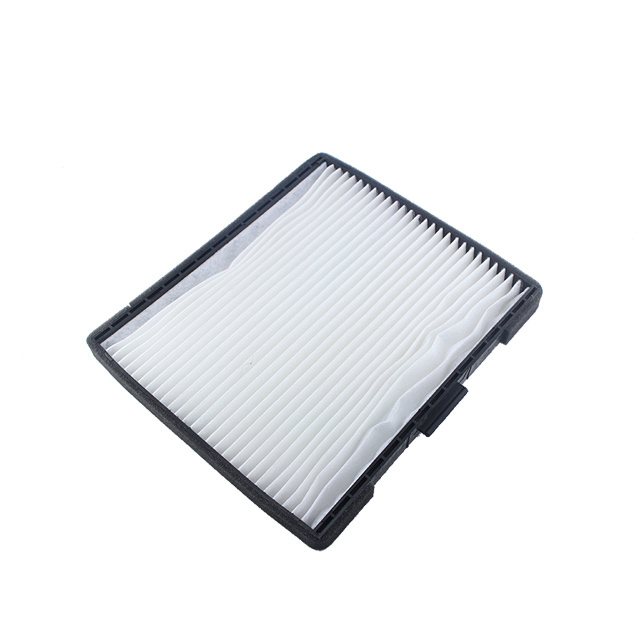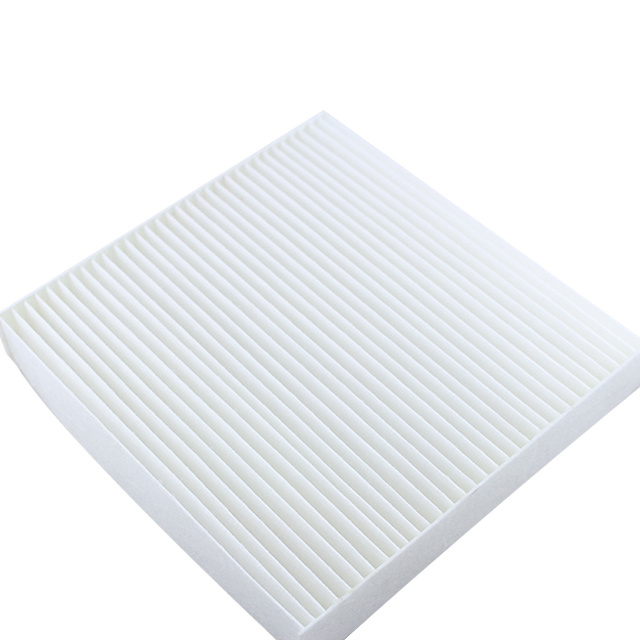Focus On Hot Spots
Contact Info
E-mail: txgs@taixifilter.com
Manager Xu: +86-15097925576
Manager Feng: +86-15803195413
Address: North side of Caiyuan Village, Gexianzhuang Town, Qinghe County, Xingtai City, Hebei Province (No. 250)
The Future of Air Filtration in Central Air Conditioning Technology
Release Time:
Jul 19,2025
The Future of Air Filtration in Central Air Conditioning Technology Introduction to Air Filtration in Central Air Conditioning In today's rapidly advancing world, the importance of air quality cannot be overstated. Central air conditioning systems play a pivotal role in maintaining comfortable indoor environments, especially in commercial and residential spaces. As we move forward, **the future of
The Future of Air Filtration in Central Air Conditioning Technology
Introduction to Air Filtration in Central Air Conditioning
In today's rapidly advancing world, the importance of air quality cannot be overstated. Central air conditioning systems play a pivotal role in maintaining comfortable indoor environments, especially in commercial and residential spaces. As we move forward, **the future of air filtration technology** in these systems promises to bring innovative solutions that are more efficient, effective, and environmentally friendly.
The Necessity of Quality Air Filtration
Airborne contaminants such as dust, pollen, mold spores, and volatile organic compounds (VOCs) can significantly affect indoor air quality. This makes investing in high-quality air filtration systems vital for health and comfort.
Health Implications of Poor Indoor Air Quality
Poor air quality can trigger **respiratory issues**, allergies, and other health problems. With an increasing number of individuals spending more time indoors, the demand for efficient air filtration systems has never been higher.
The Role of Air Filters in Central Air Conditioning
Air filters are essential components of central air conditioning systems. They help capture airborne particles, preventing them from circulating within a building. This not only improves air quality but also protects the air conditioning unit itself from damage.
Technological Innovations in Air Filtration
As the demand for cleaner air grows, so does the technology behind air filtration. The future of this technology is marked by several key advancements.
High-Efficiency Particulate Air (HEPA) Filters
HEPA filters have become a benchmark in air filtration. These filters can trap 99.97% of particles that are 0.3 microns or larger, making them highly effective for residential and commercial applications. The integration of HEPA filters into central air conditioning systems enhances indoor air quality significantly.
Activated Carbon Filters
Activated carbon filters are gaining attention for their ability to absorb odors and harmful gases. These filters are especially beneficial in urban environments, where air pollution is a concern. By combining **activated carbon** with traditional filters, central air conditioning systems can offer comprehensive air purification.
Smart Filtration Technology
The rise of smart technology is transforming the air filtration sector. Smart filters equipped with sensors can monitor air quality in real-time and alert users when replacements are necessary. This proactive approach ensures optimal performance and minimizes maintenance costs.
The Impact of Regulatory Standards on Air Filtration
Government regulations regarding air quality are becoming stricter, pushing industries to adopt better filtration technologies. Compliance with these standards not only improves public health but also drives innovation within the air conditioning and filtration sectors.
Global Standards for Air Quality
Organizations such as the World Health Organization (WHO) and the Environmental Protection Agency (EPA) set guidelines for acceptable indoor air quality levels. Following these regulations helps ensure that air conditioning systems contribute positively to indoor environments.
Environmental Considerations for Future Air Filtration
As awareness of environmental issues grows, so does the need for sustainable filtration solutions.
Energy Efficiency in Air Filtration
Energy-efficient filters not only improve air quality but also reduce energy consumption. The future of air filtration technology includes designs that maximize airflow while minimizing resistance, leading to better energy efficiency.
Biodegradable and Eco-Friendly Filter Options
The introduction of biodegradable air filters is a significant step toward sustainability. These filters reduce waste and minimize environmental impact, aligning with the growing trend of eco-conscious consumerism.
Consumer Trends in Air Filtration Technology
Understanding consumer preferences is crucial for manufacturers looking to innovate in air filtration technology.
The Shift Towards Health-Conscious Choices
As information about the impact of air quality on health becomes more accessible, consumers are increasingly seeking air filtration solutions that prioritize health. Products that offer proven results in trapping allergens and pathogens are in high demand.
Customized Air Filtration Solutions
Many consumers now favor customized air filtration options that cater to their specific needs. Whether it’s for allergy management or odor control, the demand for tailored solutions is rising, prompting manufacturers to develop more versatile products.
Challenges Facing the Air Filtration Industry
While advancements are promising, challenges remain.
Cost of Advanced Filtration Systems
The initial investment for advanced air filtration systems can be substantial. While long-term savings and health benefits are evident, some consumers may hesitate to adopt these systems due to upfront costs.
Public Awareness and Education
A significant barrier to improving indoor air quality is a lack of consumer awareness. Educating the public on the benefits of advanced air filtration can help overcome this challenge.
Future Directions in Air Filtration Technology
The future of air filtration in central air conditioning technology is bright and full of potential.
Integration of IoT and AI in Air Filtration
The integration of Internet of Things (IoT) devices and artificial intelligence (AI) into air filtration systems is set to revolutionize the industry. These technologies enable more precise monitoring and adjustment of air quality parameters, ensuring optimal performance.
Collaboration with Health Organizations
Partnerships between air filtration manufacturers and health organizations can lead to more effective solutions that address specific health concerns related to air quality.
Conclusion: Embracing the Future of Air Filtration Technology
The future of air filtration in central air conditioning technology is poised for significant advancements. As we embrace these innovations, we can look forward to improved indoor air quality, leading to healthier living and working environments. By prioritizing technological advancements, regulatory compliance, environmental sustainability, and consumer education, we can ensure a future where clean air is accessible to all.
Frequently Asked Questions (FAQs)
What is the importance of air filtration in central air conditioning?
Air filtration is crucial for removing airborne pollutants, allergens, and contaminants from indoor air, thereby improving overall air quality and ensuring a healthier environment.
How do HEPA filters work?
HEPA filters trap particles by forcing air through a fine mesh made of fibers. They are designed to capture at least 99.97% of airborne particles that are 0.3 microns in size.
What are activated carbon filters used for?
Activated carbon filters are effective at absorbing odors, gases, and volatile organic compounds (VOCs), making them ideal for environments with high levels of pollution or unpleasant odors.
How can I improve the air quality in my home?
Regularly changing air filters, using high-quality filtration systems, maintaining HVAC systems, and ensuring proper ventilation can significantly improve indoor air quality.
What advancements can we expect in air filtration technology?
Future advancements include smart and IoT-enabled filters, energy-efficient designs, and eco-friendly materials, all aimed at enhancing air quality while minimizing environmental impact.
Key words:

















